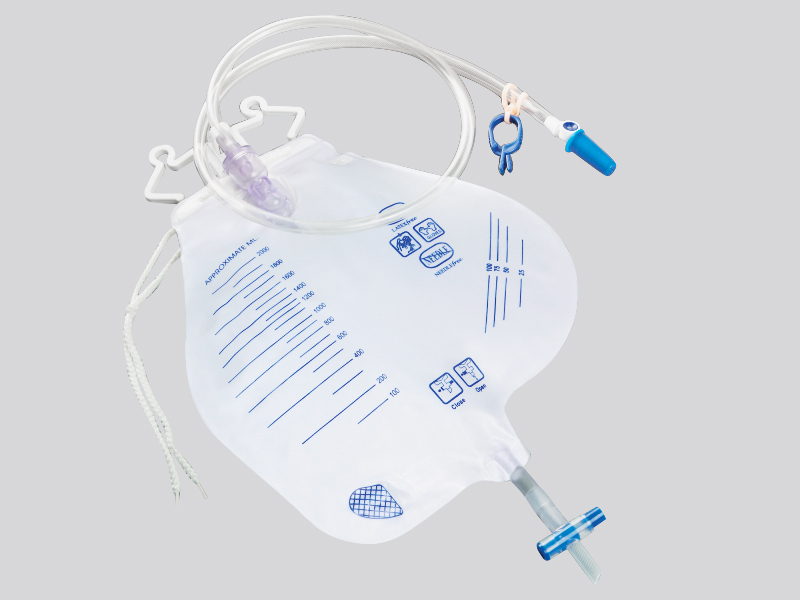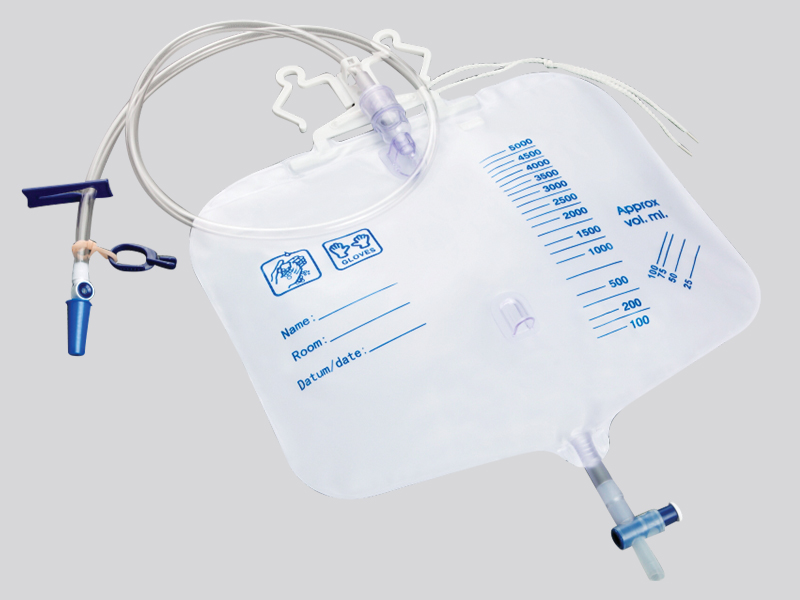
The current position:Home > Information dynamic
> Industry Trends
How to reduce medical costs with disposable drainage bags
source:m.zzykcz.com | Release time:2025年10月20日1. Save on repeated disinfection and maintenance costs, reduce manpower and consumables investment
Traditional reusable drainage bags require multiple steps of processing before they can be reused, while disposable products directly omit this process, significantly reducing related costs.
Eliminating disinfection costs: Reusable drainage bags need to be soaked in specialized disinfectants and sterilized under high pressure after use, which not only consumes energy from disinfectants and sterilization equipment (such as sterilization pots), but also requires dedicated personnel to operate. The labor and consumables cost for a single disinfection is about 30% -50% of the unit price of disposable products; Disposable drainage bags can be directly disposed of as medical waste without the need for disinfection.
Avoid maintenance and wear and tear: The valve, connecting tube, and other components of the reusable drainage bag are prone to aging and damage due to repeated disinfection, requiring regular replacement of accessories and increasing maintenance costs; The disposable drainage bag is a fully sealed package that can be used immediately after opening, with no risk of component loss and no need to invest in maintaining disinfection equipment.
2. Reduce infection related costs and minimize additional expenses caused by complications
Infection is an important cost burden for medical institutions, and disposable drainage bags reduce related expenses from the source by avoiding cross infection.
Reduce the risk of cross infection: If the reusable drainage bag is not properly disinfected, it is prone to residual pathogens (such as bacteria and viruses), leading to cross infection between patients (such as urinary tract infections and wound infections); Disposable drainage bags should be used by one person and discarded immediately after use, fundamentally cutting off the transmission path of infection and reducing the incidence of infection.
Avoiding the cost of infection treatment: Once a medical related infection occurs, patients need to use additional antibiotics, extend hospitalization time, and may also trigger medical disputes. According to statistics, the cost of treating a single hospital infection can reach thousands of yuan, and using disposable drainage bags can increase the cost of purchasing a single item, but it can avoid infection treatment and compensation expenses that are several times higher than the purchase cost.
3. Optimize medical workflow, improve efficiency, and indirectly reduce labor costs
The convenience of disposable drainage bags can reduce the non diagnosis and treatment work time of medical staff and improve overall work efficiency.
Simplified operation process: The disposable drainage bag comes with a pre disinfection connection port and a clearly marked measuring bag. After opening, it can be directly connected to the patient's drainage tube without the need to check the disinfection status or debug accessories in advance; Before using reusable drainage bags, it is necessary to verify the disinfection date and check the sealing. The operation steps are more complicated and take up more medical time.
Reduce the workload of verification and recording: The disposable drainage bag packaging is labeled with the production date, expiration date, and sterilization batch number, so that medical staff do not need to additionally record the disinfection time and frequency, reducing paperwork; The reusable drainage bag requires detailed records of each use, disinfection, and maintenance, which increases the workload of medical staff and indirectly reduces the efficiency of diagnosis and treatment.
4. Reduce inventory and management costs, optimize supply chain efficiency
The standardization and ready to use nature of disposable drainage bags can simplify inventory management in medical institutions and reduce resource waste.
Simplified inventory management: Disposable drainage bags are individually sealed and can be purchased in bulk according to specifications, without the need to distinguish between "disinfected" and "awaiting disinfection" status, making inventory classification simple; Reusable drainage bags need to be divided into storage areas of different states, and expired or disinfected products need to be regularly cleaned to increase inventory management difficulty and waste rate.
Reduce space occupation: Disposable drainage bags can be flattened and stacked for storage, with a storage capacity per unit space that is 2-3 times that of reusable drainage bags, which can save warehouse space and reduce storage costs; The reusable drainage bag needs to retain a dry and ventilated space after disinfection, with low storage density, and requires supporting storage of disinfection equipment and consumables, further occupying space.
Prev:
What are the materials of disposable feeding bags
Next:
How to efficiently drain the disposable negative …

 Cn
Cn En
En WeChat ID:
WeChat ID:






 Contact us
Contact us
 Add WeChat
Add WeChat
 Telephone
Telephone